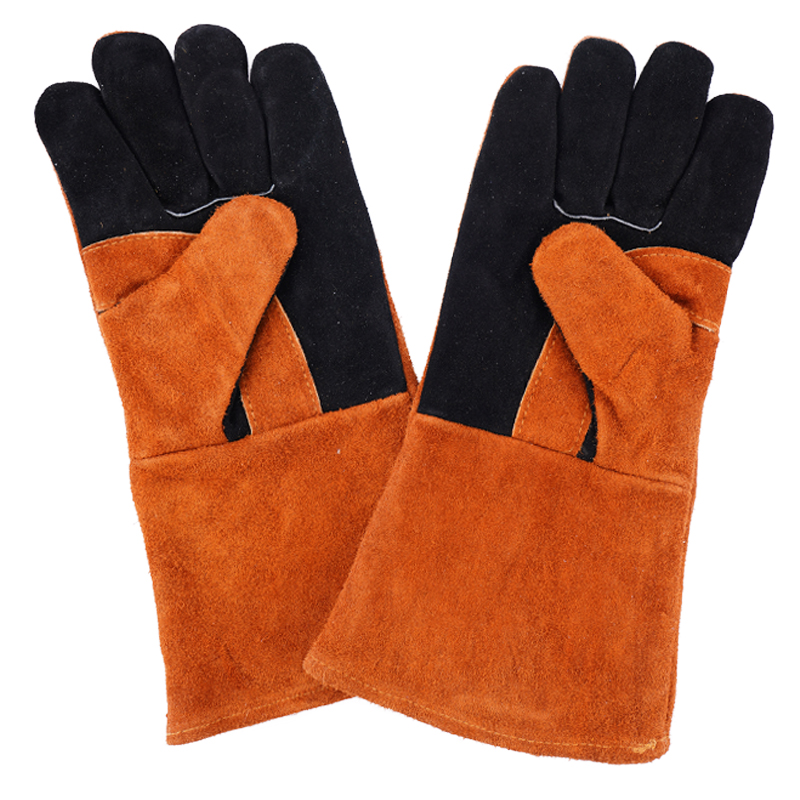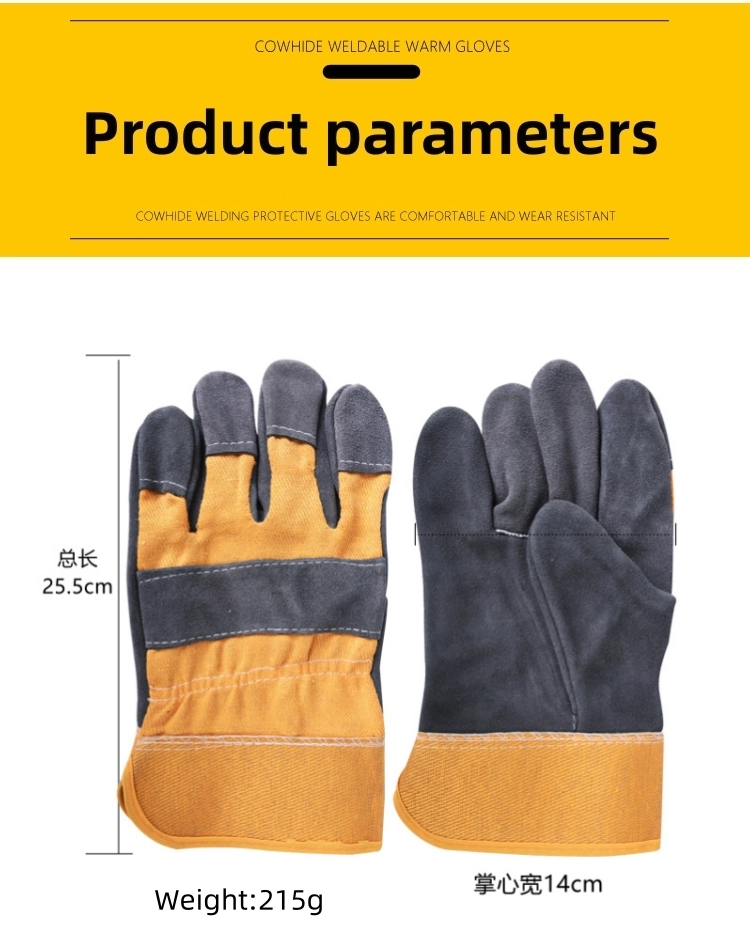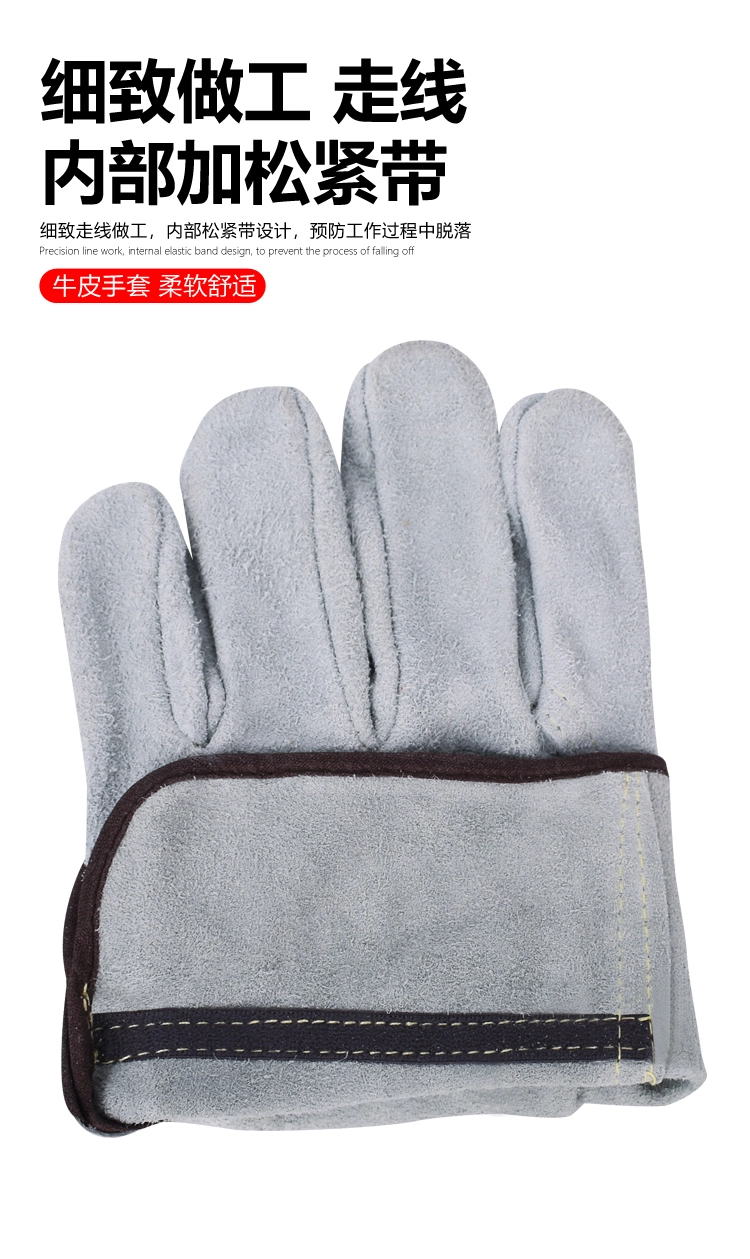Are Cotton Gloves a Safe PPE Choice for MIG, TIG, or Stick Welding? Advantages and Disadvantages Explained
As a professional in the safety equipment industry, you understand that the right Personal Protective Equipment (PPE) is not just a regulatory requirement—it's a critical line of defense for workers. When it comes to welding, the hands are on the front line, exposed to intense heat, sparks, and molten metal. The choice of a welding glove is therefore one of the most important decisions a safety manager or procurement officer can make. This article will serve as your comprehensive guide to understanding welding gloves. We will explore everything from materials like leather and Kevlar® to the specific needs of TIG, MIG, and stick welding. We will also tackle a common but critical question: Are simple cotton gloves ever appropriate for a welding job? By the end of this read, you'll have the expert knowledge to confidently select the perfect glove for any application, ensuring both safety and efficiency for your team.
What Are Welding Gloves and Why Are They Essential PPE?
Welding gloves are a specialized form of hand protection designed to shield a welder's hands from the numerous hazards associated with welding and cutting. These are not your average work gloves. A proper welding glove is engineered to withstand extreme conditions. The primary danger in any welding process is the intense heat. Whether it's from the arc, the flame, or the hot metal itself, the risk of severe burns is constant. A high-quality glove provides the necessary insulation to protect the hands while welding. Furthermore, the welding process generates a shower of sparks and molten spatter. These tiny, superheated particles can easily ignite flammable materials or cause burns on unprotected skin. A durable welding glove, often made of thick leather, acts as a barrier against this splatter.
Beyond heat and spark protection, a good welding glove also offers crucial defense against physical and electrical hazards. They provide a degree of cut resistance and abrasion resistance, protecting hands from sharp metal edges and rough surfaces common in a fabrication environment. This durability is key; a glove that wears out quickly is a glove that fails to protect. For certain types of welding, particularly stick welding (SMAW), there's also the risk of electric shock. The materials and construction of a welding glove help to insulate the welder from the electrical circuit, adding another layer of safety. Simply put, a welder should never, under any circumstances, attempt to weld without the proper pair of gloves. This piece of PPE is a non-negotiable part of the essential welding equipment kit. Each glove is a vital tool for the job.
Can You Really Use Cotton Gloves When Welding?
This is a question I hear often, especially from those looking for a cost-effective glove solution. Let's be perfectly clear: standard, untreated cotton gloves should never be the primary glove used for any active welding process. Cotton is a natural fiber, and its key characteristic is that it can and will burn quickly when exposed to a spark or high heat. Using a simple cotton glove to handle a welding torch or a freshly welded piece of hot metal is an invitation for a serious injury. The cotton fibers offer minimal insulation and can ignite, potentially melting onto the skin. This makes the basic cotton glove a significant liability in a welding environment.
So, is there any place for a cotton glove in a welder's toolkit? The answer is a qualified "yes." Some welders prefer to use thin cotton gloves as a liner inside a larger, heavy-duty leather welding glove. Why? For comfort. A cotton liner can absorb sweat and provide a softer feel against the skin, especially during long hours of work. It can also add a minor, extra layer of insulation. Additionally, specially treated, fire retardant cotton gloves do exist. These gloves have been chemically processed to resist ignition. While they offer better protection than a standard cotton fabric glove, they still generally lack the superior heat resistance and durability of a proper leather welding glove. They might be suitable for very light-duty tack welding or tasks far away from the primary weld zone, but they are not a substitute for a robust leather glove in MIG and stick welding applications. Every glove has its purpose, and the purpose of a basic cotton glove is not direct welding.

What Makes a Glove Good for a Specific Welding Process?
Not all welding is the same, and therefore, not every welding glove is suitable for every task. The "best" glove is the one that correctly balances protection and dexterity for the specific welding process being performed. A glove that is perfect for welding thick steel plates with a stick welder would be clumsy and impractical for the delicate work of TIG welding. The key is to match the features of the glove to the demands of the weld. For example, high-amperage processes like stick welding or flux-cored arc welding generate immense heat and a great deal of spatter. For these applications, a thick, heavy-duty glove with a long cuff is paramount. Here, maximum heat protection is the priority, even if it means sacrificing some finger movement.
In contrast, TIG (Tungsten Inert Gas) welding is a much more precise process. It requires the welder to manipulate a thin filler rod with one hand while controlling the torch with the other. This demands a high degree of dexterity. Therefore, TIG welding gloves are typically made from thinner, more supple materials like goatskin leather. This type of glove allows the welder to feel the rod and maintain fine motor control. The heat generated in TIG welding is more localized, so the super-heavy insulation of a stick welding glove isn't as necessary. A good TIG glove will offer enough heat resistance for the task without being bulky. MIG (Metal Inert Gas) welding often falls somewhere in the middle, requiring a balance of both heat protection and dexterity, making a medium-duty cowhide leather glove a popular choice. The ideal glove truly depends on the weld.
How Do Leather Welding Gloves Compare to Other Materials?
Leather is the undisputed king of materials for welding gloves, and for good reason. Its natural properties make it uniquely suited for the harsh environment of a weld shop. However, different types of leather and other synthetic materials offer a range of advantages and disadvantages. As a procurement officer, understanding these differences is key to making a smart purchase. A good glove is an investment in safety.
Here's a breakdown of common materials used in protective gloves:
| Material | Primary Advantage | Primary Disadvantage | Best For |
|---|---|---|---|
| Cowhide Leather | Durability, Good Heat Resistance, Cost-Effective | Can be stiff until broken in | MIG and Stick Welding, General Fabrication |
| Goatskin Leather | Excellent Dexterity, Soft and Supple | Less durable and heat resistant than cowhide | TIG Welding, fine-handling tasks |
| Deerskin Leather | Very soft and flexible, good dexterity | More expensive, less abrasion resistant | TIG and some MIG welding |
| Flame-Retardant Cotton | Lightweight, Breathable, Low Cost | Low durability, minimal heat protection | Very light-duty tasks, used as a liner |
| Kevlar®/Aramid Fibers | Extreme Heat Resistance, Cut Resistance | Expensive, can be stiff | High-temperature welding, handling hot metal |
| Aluminum/Fiberglass | Reflects Radiant Heat | Bulky, lacks dexterity | Foundries, high-heat furnace work |
Cowhide leather is the workhorse. It's tough, abrasion resistant, and provides great protection from sparks and moderate heat, making it perfect for most MIG and stick welding. It's often found in a "split-leather" form, which is the rougher layer of the hide, offering great durability and resistance to heat. 10.5" Suede Leather Yellow Cloth Split Palm Gloves are a classic example of a versatile work glove using this material. For tasks requiring more feel, top-grain cowhide leather or goatskin leather is preferred. Synthetic materials like Kevlar® are not typically used for an entire glove but are often used to stitch the glove together, as the Kevlar® stitch won't burn or melt like a polyester or nylon thread. This detail greatly extends the life of a glove. The choice of material for your glove is one of the most important safety decisions.

What are the Key Differences Between TIG, MIG, and Stick Welding Gloves?
Understanding the specific needs of each welding process is crucial for selecting the right personal protective equipment. While all welding requires protection, the type and level of protection can vary significantly. A TIG glove, a MIG glove, and a stick glove are designed with different priorities in mind.
Stick (SMAW) Welding Gloves: This is the heavyweight champion of welding gloves. Stick welding produces intense heat, heavy slag, and a lot of spatter. Protection is the number one priority.
- Material: Almost always made from thick split cowhide leather.
- Features: Heavy insulation, often with a wool or cotton liner. They feature a long, wide cuff to protect the forearm.
- Dexterity: Low. The thickness required for protection makes fine manipulation difficult. This is acceptable as stick welding is less delicate.
MIG (GMAW) Welding Gloves: MIG welding is cleaner than stick, but it still generates significant heat and sparks. These gloves are the all-rounders, balancing protection and some dexterity.
- Material: Typically made from cowhide leather, but can be top-grain or split-leather. Some MIG glove styles use goatskin on the palm for better feel.
- Features: Good heat resistance, often with a reinforced palm and thumb. The cuff is usually shorter than a stick glove but still offers forearm protection.
- Dexterity: Medium. A good MIG glove allows the welder to feel the trigger and guide the MIG gun comfortably.
TIG (GTAW) Welding Gloves: TIG welding is all about precision and control. The arc is very focused and produces little to no spatter. The main requirement for a glove here is dexterity while working.
- Material: Usually made from thin, soft goatskin, sheepskin, or deerskin.
- Features: Unlined or very lightly lined to maximize feel. The fit is snug, like a driver's glove. The cuff is often shorter and tighter.
- Dexterity: High. The primary function of TIG welding gloves is to provide just enough heat protection without hindering the welder's ability to control the torch and feed the filler rod. A good 10.5'' Cowhide Leather Short Working Gloves can sometimes be used for light TIG work due to its balance of protection and feel.
Choosing the wrong glove style for the job can lead to frustration, poor weld quality, or even injury. Using a bulky stick welding mitt for TIG is nearly impossible, and using a thin TIG glove for heavy stick welding is dangerously inadequate. Each glove must match the weld.
What Should I Look for in the Stitch and Cuff of a Welding Glove?
The small details of a welding glove often determine its true quality and lifespan. Two of the most important, yet often overlooked, features are the stitching and the cuff. A well-made glove will pay close attention to both. The thread used to stitch a welding glove together is its weakest link. If the thread burns through, the glove will literally fall apart at the seams. Standard polyester or cotton thread will burn and snap almost instantly when touched by welding spatter. This is why a quality welding glove will always be stitched with Kevlar® or a similar aramid fiber thread. A Kevlar® stitch is highly resistant to heat and abrasion, ensuring the glove stays intact even under heavy use. When inspecting a glove, look for welted seams, where an extra strip of leather is sewn over the seam to protect the stitch from sparks.
The cuff of the glove is equally important for safety. Its primary job is to protect the wrist and forearm from heat, sparks, and UV radiation from the arc. For high-heat processes like stick welding or overhead welding, a longer cuff (typically 4-6 inches or more) is essential. This prevents sparks from falling into the top of the glove. Some heavy-duty gloves even have a wider "gauntlet" style cuff that allows for quick removal in an emergency and provides ventilation. For TIG welding, where less spatter is a concern, a shorter, more fitted cuff is common as it interferes less with wrist movement. The material of the cuff is also important. On a leather welding glove, the cuff should also be leather, though some work gloves may use a durable canvas cuff. Every part of the glove, from fingertip to cuff, plays a role in protection.

How Does Glove Insulation and Heat Resistance Work?
Heat resistance is the single most important function of a welding glove. This protection is achieved through a combination of material choice and construction. The ability of a glove to insulate the hands from high temperatures comes down to its ability to slow the transfer of heat. Thick materials are a primary factor. The more material between the heat source and the skin, the longer it takes for the heat to penetrate. This is why a heavy-duty stick welding glove is made from thick leather.
However, material thickness is only part of the story. The type of material also matters. Leather is a great natural insulator because its dense fiber structure is poor at conducting heat. The air trapped within the fibers adds to its insulating properties. To further boost heat protection, many welding gloves incorporate a liner. Common liner materials include:
- Cotton/Fleece: Comfortable and provides good insulation from moderate heat. A cotton liner helps absorb sweat, improving comfort.
- Wool: An excellent natural insulator that retains its properties even when damp.
- Aluminized Layers: Materials with an aluminum backing are designed to reflect radiant heat, which is ideal for foundry work or when working near furnaces. A Kevlar with Aluminum Foil Heat Resistant Fire Retardant Gloves is a prime example of a glove designed for extreme reflective heat.
It's important to understand the two types of heat a glove protects against: contact heat (touching hot metal) and radiant heat (heat from the arc or flame). A thick leather glove is great for contact heat, while an aluminized glove excels at blocking radiant heat. A quality welding glove will offer a certified level of heat resistance (like EN 407 in Europe), giving you a reliable measure of its protective capabilities. The right glove will provide the necessary insulation to keep the welder safe and comfortable.
Are There Other Protective Equipment I Need Besides a Good Glove?
Absolutely. While a high-quality welding glove is fundamental, it is only one piece of the comprehensive Personal Protective Equipment (PPE) system a welder must use. Welding is a hazardous job, and full-body protection is not optional. Relying on just one piece of equipment, even a great glove, is a dangerous mistake. Every welder must be outfitted with a complete set of protective gear from head to toe.
The most critical piece of equipment, alongside the glove, is the welding helmet. A proper welding helmet with an auto-darkening filter protects the eyes and face from the incredibly intense ultraviolet (UV) and infrared (IR) radiation produced by the welding arc. This radiation can cause a painful condition known as "arc eye" or "welder's flash," and long-term exposure can lead to permanent eye damage. The helmet also shields the face from sparks and spatter. A welding jacket or apron, made from flame-retardant cotton or leather, is also essential. It protects the torso and arms from burns. For leg protection, fire-resistant pants and leather spats or foot covers are necessary to prevent sparks from falling into boots. Finally, proper footwear, usually leather work boots, protects the feet. Every piece of this protective equipment works together to create a safe operating environment for the welder.
What Quality Checks Should a Buyer Like Mark Perform on a Welding Glove Shipment?
As a procurement officer like Mark Thompson, your responsibility extends beyond simply placing an order. Ensuring the quality and consistency of the welding gloves you receive is vital for the safety of your end-users. My advice, as a factory owner, is to establish a clear and consistent quality inspection protocol. When a new shipment of gloves arrives, don't just move it to the warehouse. Take the time to spot-check the product.
First, check for consistency. Pull several pairs of gloves from different boxes. Are they all the same size, color, and design as specified in your order? Inconsistencies can be a sign of poor quality control at the factory. Next, examine the material itself. If you ordered a cowhide leather glove, does the leather feel suitably thick and durable? Look for blemishes, thin spots, or tears. Flex the glove and check the seams. As we discussed, pull on the stitch. Is it strong? Is it Kevlar® as promised? A weak or incorrect stitch is a major red flag. Check the liner to ensure it is properly attached and doesn't bunch up inside the glove. Finally, verify any certifications. If you require CE or ANSI certified gloves, ensure the markings are present and correct on the glove or its packaging. Addressing quality issues immediately with your supplier prevents defective products from reaching your workers and helps build a stronger, more accountable business relationship. A great glove is a consistent glove.
How Can I Find a Reliable Welding Glove Supplier?
Finding a trustworthy supplier is the cornerstone of a successful procurement strategy. For a buyer like Mark, who values quality and competitive pricing, this search is critical. There are two primary avenues for finding excellent overseas suppliers: trade exhibitions and targeted online searches. Exhibitions, like the A+A in Germany or the National Safety Council Congress & Expo in the USA, are invaluable. They allow you to meet suppliers face-to-face, like myself, Allen. You can physically handle the glove, inspect the quality firsthand, and have in-depth conversations about your specific needs, from material specifications to logistics. This direct interaction helps build trust and solves the communication pain points you might have experienced.
The second powerful tool is a targeted Google search. Using specific keywords like "welding glove manufacturer China," "bulk cowhide leather gloves," or "B2B protective equipment supplier" can yield excellent results. However, you must then vet these potential partners. Look for professional websites with detailed product information, clear contact details, and evidence of their experience and certifications. Don't be afraid to ask for references or a sample order. A reputable factory will be happy to provide samples to showcase their quality. The goal is to find a partner, not just a seller—a supplier who understands your needs, communicates clearly, and consistently delivers a high-quality, reliable welding glove. A great supplier will have a range of gloves, including heavy-duty options like 14 inch Thick Palm Welding Protective Gloves, to meet all your requirements.
Key Takeaways to Remember
- Safety First: The primary purpose of any welding glove is to protect the welder from extreme heat, sparks, and electrical hazards. It is a non-negotiable piece of PPE.
- No Plain Cotton: Standard, untreated cotton gloves are not safe for active welding. They can ignite and cause severe burns. Use them only as liners inside a proper welding glove.
- Match the Glove to the Weld: Use heavy-duty, thick leather gloves for stick welding; versatile, medium-duty gloves for MIG welding; and thin, high-dexterity gloves for TIG welding.
- Material Matters: Cowhide leather is the durable workhorse for MIG and stick welding, while softer goatskin is ideal for the precision of TIG.
- Check the Details: Always inspect the stitching (it must be Kevlar® or aramid) and the cuff length to ensure they are appropriate for the application.
- Inspect Your Shipments: As a buyer, you must perform quality checks on every shipment to ensure consistency in size, material, and construction.
- Full PPE is Essential: A good glove is just one part of the system. A welding helmet, jacket, and proper footwear are also mandatory for safety.






